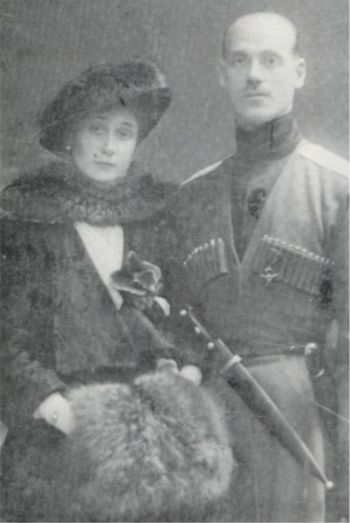by Scott Mehl © Unofficial Royalty 2018
Duchy of Saxe-Altenburg: The Duchy of Saxe-Altenburg was created in 1826 when Friedrich, Duke of Saxe-Hildburghausen became Duke of Saxe-Altenburg. After Friedrich IV, Duke of Saxe-Gotha-Altenburg died in 1825 without heirs, the Ernestine duchies were reorganized. Gotha passed to the Duke of Saxe-Coburg-Saalfeld becoming the Duchy of Saxe-Coburg and Gotha and Altenburg passed to Friedrich. In exchange, the two Dukes ceded Saalfeld and Hildburghausen, respectively, to the Duke of Saxe-Meiningen.
As World War I ended, the last Duke of Saxe-Altenburg, Ernst II, was one of the first German sovereigns to realize that major changes were coming and quickly arrived at an amicable settlement with his subjects. He abdicated on November 13, 1918. Today the territory that encompassed the Duchy of Saxe-Altenburg is located in the German state of Thuringia.
********************

Ernst II, Duke of Saxe-Altenburg; source Wikipedia
Ernst II was the last reigning Duke of Saxe-Altenburg, succeeding his uncle, Ernst I, in 1908. Prince Ernst Bernhard Georg Johann Karl Friedrich Peter Albert was born in Altenburg, Duchy of Saxe-Altenburg, now in Thuringia, Germany, on August 31, 1871, the only son of Prince Moritz of Saxe-Altenburg and Princess Auguste of Saxe-Meiningen. Ernst had four sisters:
Raised at the Prince’s Palace in Altenburg, Duchy of Saxe-Altenburg, now in Thuringia, Germany, Ernst was very close to his sisters. After receiving his initial education at home, he attended the Vitzthumsche Gymnasium in Dresden, Kingdom of Saxony, now in the German state of Saxony, from 1884-1886, and then the Christians-Gymnasium in Eisenberg, Duchy of Saxe-Altenburg, now in the German state of Thuringia, from 1886-1889. Over the next three years, he studied at the University of Lausanne in Switzerland, the University of Jena, in the Duchy of Saxe-Weimar-Eisenach, now in Thuringia, Germany, and the University of Heidelberg, in the Grand Duchy of Baden, now in Baden-Württemberg, Germany. Ernst then attended the War School in Kassel, Kingdom of Prussia, now in Hesse, Germany, and received his officer’s commission in 1894. That year, he joined the 1st Foot Guards Regiment of the Prussian Army as a Lieutenant.

Adelheid of Schaumburg-Lippe. source: Wikipedia
Ernst married Princess Adelheid of Schaumburg-Lippe on February 27, 1898, in Bückeburg, Principality of Schaumburg-Lippe, now in Lower Saxony, Germany. She was the daughter of Prince Wilhelm of Schaumburg-Lippe and Princess Bathildis of Anhalt-Dessau. Ernst and Adelheid had four children:

Ernst II with his wife and children, c1906. source: Wikipedia
Ernst became Duke following his uncle’s death on February 7, 1908. He was a popular ruler who made efforts to be close to his subjects. He would hold audiences for anyone who wanted to meet with him. He also pursued his interests in science and technology, opening an airfield in 1911, and owning one of the first cars in the duchy. During most of his reign, he continued with his military career. At the outbreak of World War I, he commanded a regiment that was part of the IV Army Corps on the Western Front. He was appointed General of the Infantry in 1914 and Commander of the 8th Division in 1915. He retired fully from military service in August 1916.
Ernst II abdicated on November 13, 1918, as the German Empire ended. Taking an apartment in Berlin, he studied at the University of Berlin, hearing lectures in physics, oceanography, and philosophy. Ernst and his wife separated, and their marriage formally ended in divorce on January 17, 1920. Later that year, he announced his engagement to an opera singer, Helena Thomas, but the marriage never took place.

Schloss Fröhliche Wiederkunft. photo: By Fovea112 – Own work, CC BY-SA 3.0, https://commons.wikimedia.org/w/index.php?curid=14542089
Although Ernst retained ownership of Altenburg Castle, he left the castle in 1922 and moved to Schloss Fröhliche Wiederkunft in Wolfersdorf, Germany one of the family’s privately owned estates. Literally translated as ‘The Castle of Happy Return’, the Schloss dated back to the 1500s and had been thoroughly restored and expanded in the 1850s and 1860s by Ernst’s great-uncle Joseph, the former Duke of Saxe-Altenburg.
Ernst had a modern observatory constructed at the Schloss to enjoy his love of astronomy. Ernst began using the title Baron of Rieseneck, as he was forbidden from using his ducal title. It was not until 1934 that he was again permitted to use ‘Duke of Saxe-Altenburg’, but only as a surname. In the 1930s, he studied at the Astrophysical Institute at the University of Jena, further expanding his scientific knowledge. In 1934, he married his longtime companion, Maria Triebel (b. October 1893). As the marriage was morganatic, his new wife took the title Countess of Rieseneck. They had no children.
Ernst became a member of the Nazi Party in May 1937, and the following year received honorary citizenship from the City of Altenburg. He gifted Altenburg Castle to the city, in 1943. After World War II, he refused an offer to relocate to the British occupation zone, preferring to gain citizenship in the German Democratic Republic also known as East Germany. The East German government expropriated his beloved Schloss Fröhliche Wiederkunft in 1946, but Ernst was given the use of the residence for the remainder of his life.
At the age of 83, Ernst II, Duke of Saxe-Altenburg died at Schloss Fröhliche Wiederkunft on March 22, 1955. He is buried in the Ducal Cemetery in Trockenborn-Wolfersdorf alongside his second wife. He was the only former German ruler who was a citizen of the German Democratic Republic (East Germany), and the last surviving sovereign from the German Empire. The Saxe-Altenburg line ended in 1991, following the death of Ernst’s son, Hereditary Prince Georg Moritz.
This article is the intellectual property of Unofficial Royalty and is NOT TO BE COPIED, EDITED, OR POSTED IN ANY FORM ON ANOTHER WEBSITE under any circumstances. It is permissible to use a link that directs to Unofficial Royalty.
Saxe-Altenburg Resources at Unofficial Royalty





























